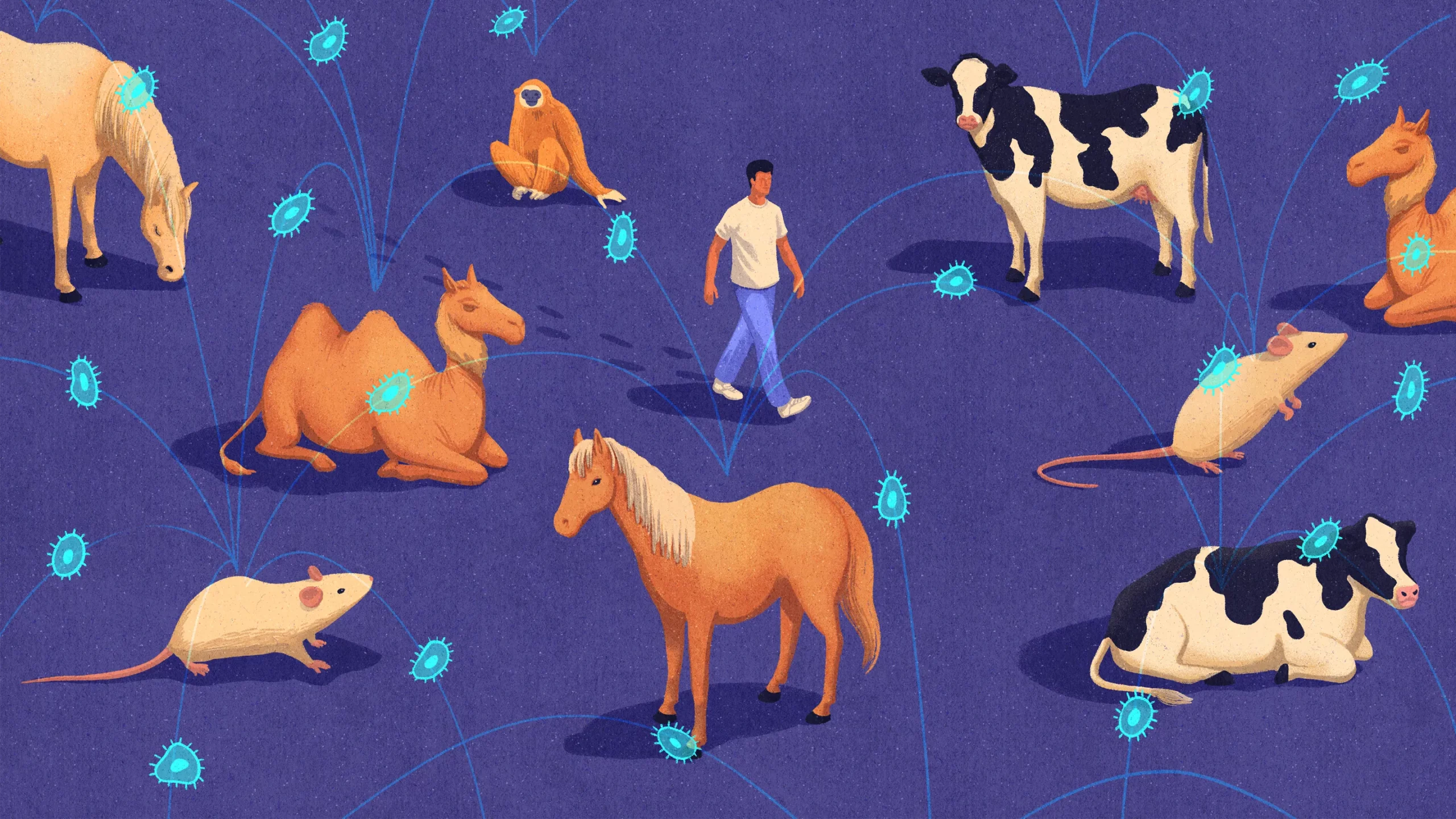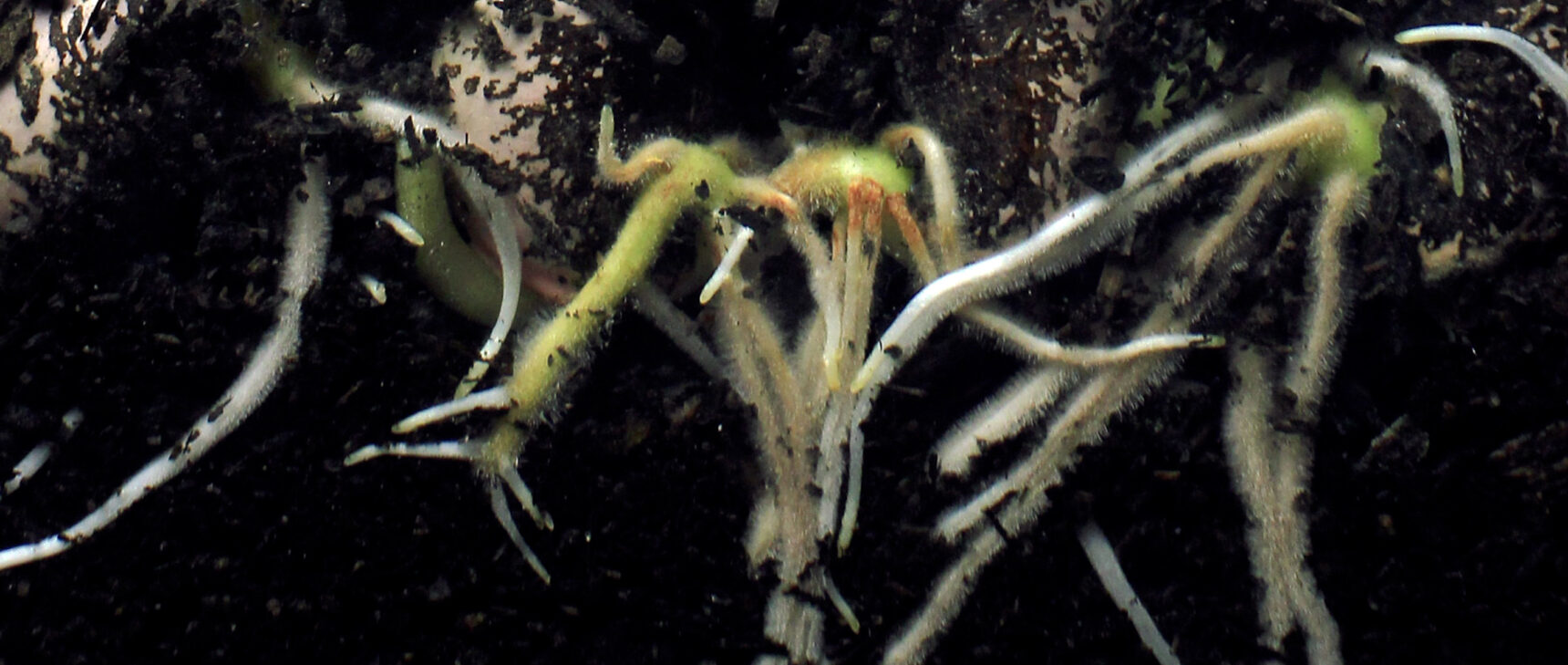What We Know About Monkeypox

Myriam Wares for Quanta Magazine
Introduction
The 2020s have already been a long decade for those who study infectious diseases. In the third year of the Covid-19 pandemic, we’ve witnessed the global emergence of another viral pathogen: monkeypox.
The disease was a problem in many African countries but had remained largely contained there prior to 2022. Then in early May, researchers discovered a cluster of cases in the United Kingdom. Soon after, cases were confirmed in Portugal, Spain, the United States and Canada.
The outbreak continued to spread. Over 66,000 cases have been reported since spring 2022, with more than a third of those identified in the U.S. On July 23, the World Health Organization declared the epidemic a public health emergency of international concern, which acts as a global signal that the outbreak is significant and requires international cooperation to control.
Luckily, since monkeypox is not a new disease, we already know the answers to some of the most pressing questions. We’re actively searching for the answers to others — including whether it’s here to stay.
What is monkeypox and how does it spread?
It’s a virus, belonging to the genus orthopox. That means it’s related to the dreaded smallpox, which killed between 300 and 500 million people globally during the 20th century before its eradication in 1980. Monkeypox spreads primarily via extended close contact, including skin-to-skin touching, and potentially via respiratory secretions including exhaled droplets or aerosols.
Symptoms of monkeypox can include fever, body aches, chills and a distinctive skin rash, usually with raised blisters. The infection is generally described as mild, but that just means it doesn’t usually cause hospitalization or death. Many sufferers have described the blisters as extremely painful.
What do we know about the virus itself?
Orthopox viruses are DNA viruses, meaning they use DNA as their genetic material (in comparison to SARS-CoV-2 or influenza viruses, which have RNA-based genetic material). DNA viruses also tend to mutate more slowly than RNA viruses. Historically, the term “pox” referred to the blisters such viruses cause. These include viruses that infect various animal species, such as camelpox, horsepox, cowpox and raccoonpox. (Notably absent: chickenpox. It causes similar symptoms and sounds like it should be included, but it is a herpes virus, not a true pox virus.) Most orthopox viruses are zoonotic — that is, they move between animals and people. Smallpox likely evolved from an ancestral rodent virus, but it became human-adapted, meaning it mutated over time to become more efficient at spreading in human populations.
Despite the name, monkeypox is primarily a rodent virus. It’s associated with small African mammals such as rope squirrels and giant pouched rats, though we don’t know the full diversity of host species. Monkeypox was first identified in 1958 during an outbreak at a monkey research facility in Denmark; the monkeys had come into contact with infected rodents.
Doctors didn’t identify monkeypox infections in humans until 1970, likely because the infections were misdiagnosed as smallpox, which was more common and had similar (if more extreme) symptoms. Later that decade, smallpox eradication campaigns made that infection rare, and increased surveillance caught more monkeypox infections. While most of these cases were likely acquired via contact with infected animals, four were thought to be the result of person-to-person spread, demonstrating that such transmission was possible.
Do we have vaccines for monkeypox?
We do, in a way. Once you’re immune to an orthopox virus, you have some protection against all of them. So existing vaccines for smallpox also guard against infection from monkeypox. (This echoes the origin story of the first vaccine: Edward Jenner used weaker cowpox infections to build immunity against the more serious smallpox virus. The word “vaccine” derives from the Latin word vacca, meaning cow.)
However, using the smallpox vaccine can be difficult. The vaccine used most in the fight against smallpox, ACAM2000, contains a live, replicating virus. While largely safe, it can cause serious infection in immunocompromised individuals and others with certain skin conditions, including eczema. In fact, once smallpox cases started dwindling, most countries stopped vaccinating for smallpox, because the side effects from the vaccine became riskier than the chance of infection with the actual virus.
The good news is that we have a second vaccine, Jynneos. This vaccine has a weakened, nonreplicating version of the virus, making it an option for people who can’t take ACAM2000. However, this vaccine is in short supply and requires two doses taken four weeks apart for full protection. To stretch the supply, the FDA has authorized using just one-fifth of the typical dose, even though clinical trials evaluating the efficacy of this approach have just begun.
A further limitation of both vaccines is that neither has been tested specifically against monkeypox. Both come from a limited supply meant to be used in the event of a bioterrorism incident, such as the purposeful release of smallpox virus.
How did this outbreak start?
The virus causing the current outbreak is most closely related to virus strains found in Nigeria. The country reported no monkeypox cases between 1979 and 2016, but in September 2017 an outbreak began with an infection in an 11-year-old boy. This led to increased surveillance for the disease, and 276 suspected or confirmed cases were found over the next year. The authorities warned that monkeypox could have been spreading in the country undetected for a long time.
The outbreak in Nigeria seems to represent a shift from sporadic infections caused by animals to sustained chains of human-to-human transmission, especially in urban areas and prisons.
Why is this outbreak happening now?
Ironically, the eradication of smallpox has likely allowed monkeypox to flourish. As smallpox became less common, vaccinations also stopped; generations of people have never been immunized against smallpox or infected with the virus. This immunity gap left billions of people susceptible to monkeypox. Many experts tried to sound the alarm about the possibility of an outbreak. A 2020 report warned that “global travel and easy access to remote and potentially monkeypox-endemic regions are a cause for increasing global vigilance.”
In addition, monkeypox was an ignored pathogen for years, even after a smaller U.S. outbreak in 2003 showed how easily it could emerge from its African animal roots. Studies have been chronically underfunded, so we don’t know a lot about the ecology of the virus in nature. For example: Which animals are most likely to carry the virus? Does the answer change with the seasons?
We also missed the opportunity to offer preemptive vaccinations in affected countries, which could have protected individuals in monkeypox-endemic areas and reduced the chance that the virus would spread to non-endemic countries. Such a campaign wouldn’t have been easy: Challenges include making sure the vaccines are approved in all countries, ensuring an adequate supply, and various logistical issues. But the world has worked to overcome such obstacles before. Monkeypox simply did not rise to the same level of concern as other vaccine-preventable diseases.
Can the epidemic be contained, or will the virus become endemic outside of Africa?
This is the key question facing public health leaders in the U.S. and other affected countries right now. New cases have started to decline in the U.S. and many other countries, likely due to a combination of vaccination and preventive behaviors.
Another aspect of the virus that makes it more amenable to control is that, assuming monkeypox immunity is like smallpox immunity, those who have been infected should be protected for quite some time — potentially forever.
And those in the U.S. who are infected now have access to an antiviral drug which has been approved for smallpox infection and used experimentally for monkeypox disease. Called TPOXX (tecovirimat monohydrate), the drug appears to be safe and may reduce the duration and severity of monkeypox symptoms.
But even if this outbreak is eventually controlled and monkeypox disappears from the U.S., we will only be protected until it inevitably returns. To truly reduce our risk, we need to work with African scientists and public health leaders to make vaccines broadly available for endemic areas and allocate the funds to study this virus. Perhaps this outbreak will be enough to demonstrate that these goals are worth the cost.



